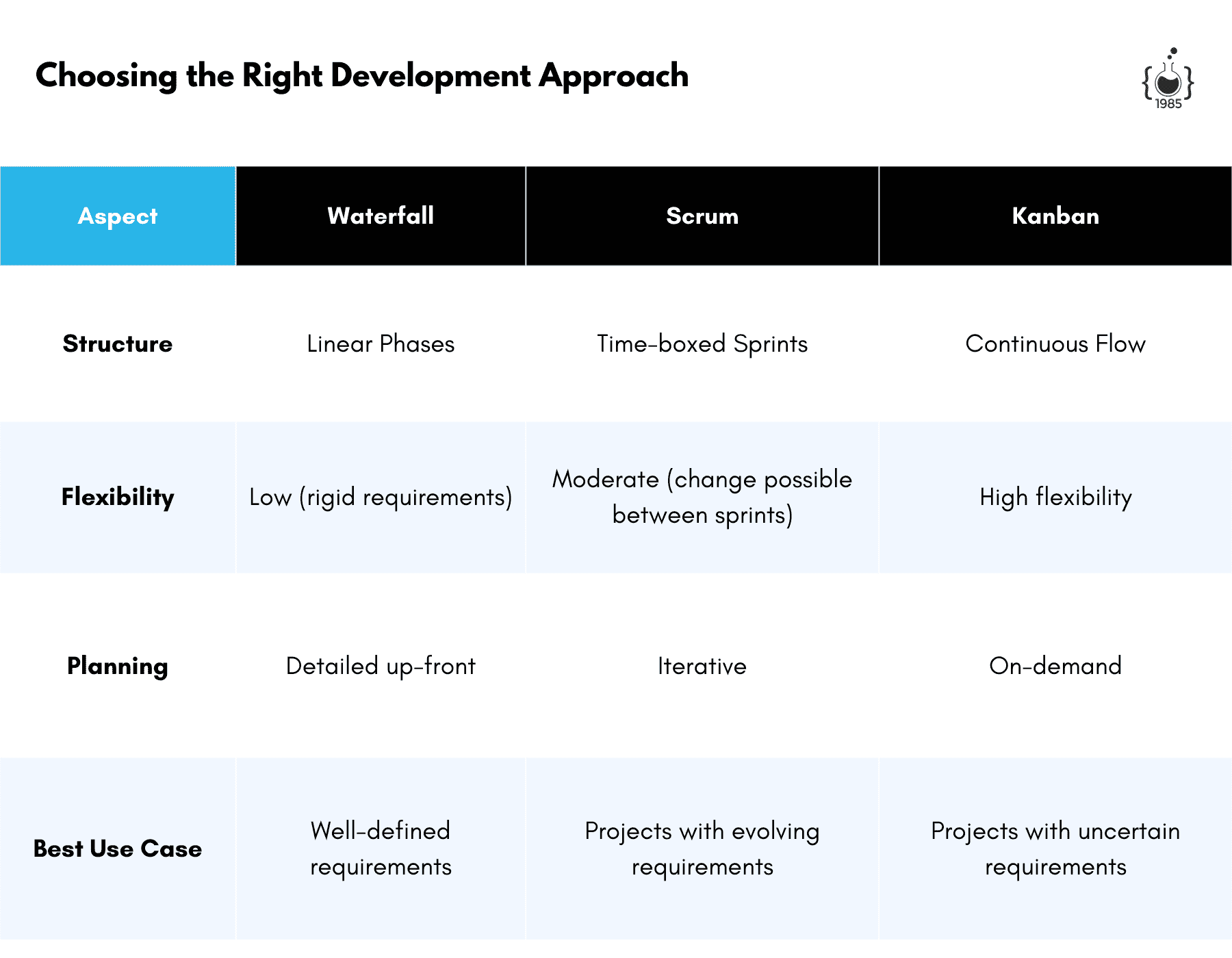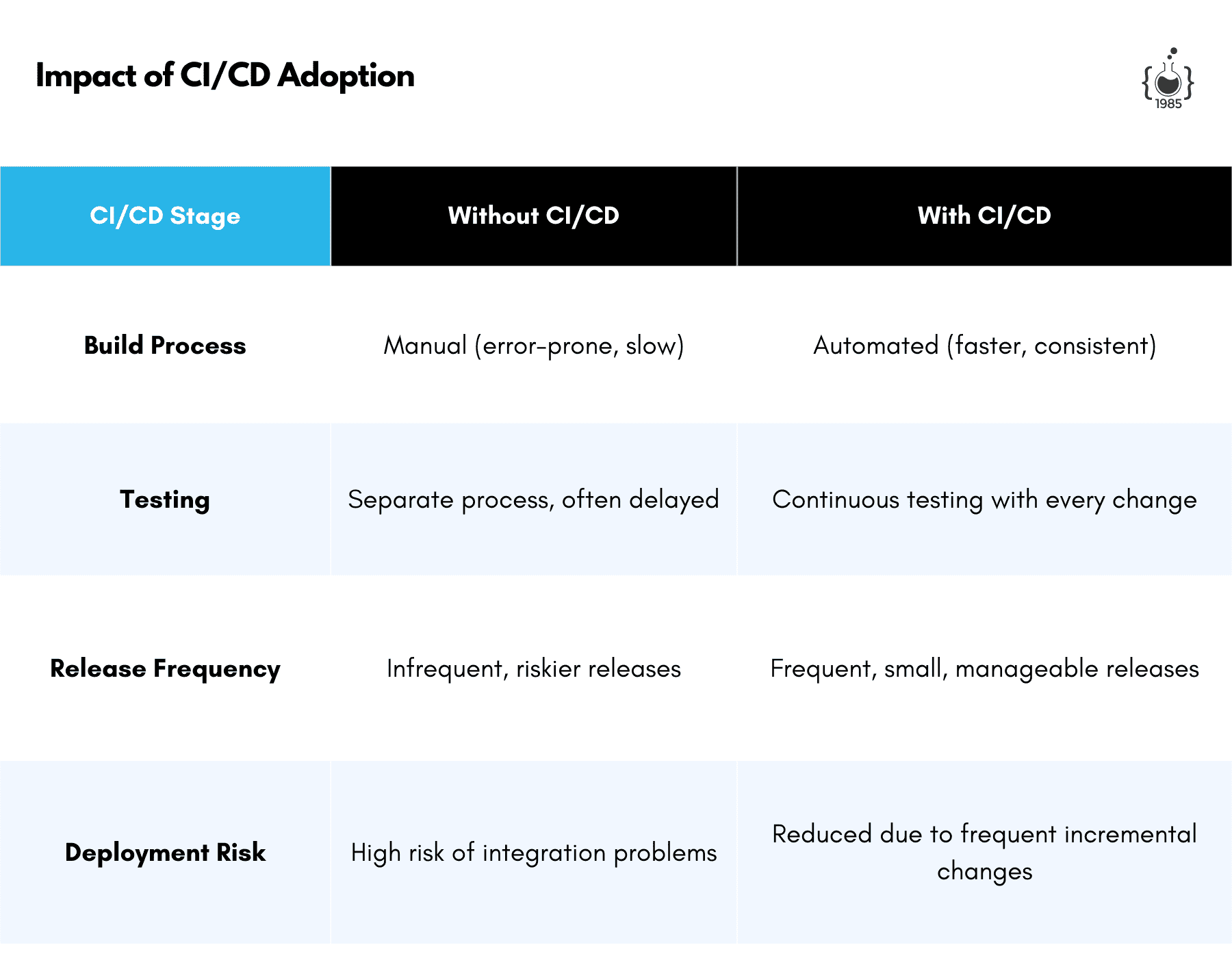Reducing Time-to-Market for Software Products: A Friendly Guide for Outsourced Dev Team
Want to get your software products out faster? Here’s a step-by-step guide to reduce time-to-market intelligently.

Time-to-market. It’s a phrase that’s casually tossed around in boardrooms, on Slack threads, and during Monday morning scrums. But anyone who’s ever led a software development project knows the weight it carries. Getting a product into the hands of users faster can be the difference between riding a trend or missing it altogether. Between market leadership and irrelevance. As someone running an outsourced software dev company, 1985, let me tell you—reducing time-to-market isn’t just about moving fast. It’s about moving smart.
Now, we all know the classic rule—“Good, Fast, Cheap: pick two.” But let’s be honest. In today’s hyper-competitive software landscape, you need all three. Good quality, delivered fast, without breaking the bank. Sounds impossible, right? It isn’t. You just need the right playbook—the right mix of tactics and mindsets. So let’s dive in. Here’s how to reduce your time-to-market without compromising quality or sanity.

Understand the Core Problem: It’s Not Always the Tech
Reducing time-to-market isn’t always about having the best tech stack or the fastest servers. Often, the biggest delays come from something more mundane—communication breakdowns, indecision, or poorly defined requirements. Imagine you’re building a house, but the architect keeps changing the blueprint. Or worse, no one’s clear on what the house should look like in the first place. You’ll end up rebuilding that kitchen ten times. It’s no different in software.
The first step to speed? Get clarity. This means having well-defined product requirements, clear-cut user stories, and a shared understanding across the entire team. Use tools like Jira or Notion to centralize information. Create a culture where questions are encouraged—and answered. Make sure everyone understands what success looks like before the first line of code is written. More often than not, a delayed release isn’t because of some complicated tech bug. It’s because someone—somewhere—didn’t know what to build.

Choosing the Right Development Approach
When it comes to software development, different projects call for different methodologies. Traditional Waterfall methods are rigid—they work well if you know exactly what you need, with zero room for change. But in a world where user preferences evolve overnight, Agile methods are usually the way to go.

But here’s the kicker: not all Agile is created equal. If your Agile looks more like “water-scrum-fall,” with arbitrary two-week sprints that don’t deliver much, it’s time to recalibrate. The goal is to have fully shippable increments at the end of each sprint. To do this, prioritize the MVP (Minimum Viable Product). Get something basic in front of users, and then iterate.
Another nuanced approach is Kanban. Unlike Scrum, which dictates sprints, Kanban is more of a continuous flow—perfect for projects where requirements are constantly evolving. By visualizing work on Kanban boards, you can easily spot bottlenecks and adapt on the fly.
Here's a table comparing Scrum and Kanban to help you decide:

It’s important to understand which framework fits your project style. Scrum works when you have defined milestones, while Kanban works wonders when flexibility is essential.
Parallelizing Work Without Creating Chaos
One of the best ways to shorten timelines is to get more hands on deck. But adding developers to a late project doesn’t always speed things up—sometimes, it makes things worse. You’ve got to know what to parallelize.

Look for parts of your product that can be worked on independently. Splitting a monolith into microservices is a fantastic way to make this possible. With microservices, different teams can work on different functionalities—auth, billing, analytics—at the same time without stepping on each other’s toes. In other words, you don’t need to wait for the front-end team to finish before the back-end folks start.
Another great tool? Feature flagging. Use services like LaunchDarkly or Unleash to release features in a controlled manner, even if they’re not fully complete. This allows you to separate deployment from release, reducing risk while keeping the pace fast. You can deploy incomplete features, test in production with limited users, and iterate without the fear of breaking the user experience for everyone.

Invest in CI/CD Early On
If there’s one thing to get right, it’s Continuous Integration and Continuous Deployment (CI/CD). Setting up a CI/CD pipeline can feel like a chore when you’re rushing to get the first version out the door. But without it, every change becomes a manual process—pushing code becomes a terrifying gamble instead of an everyday event.

Get it right, and you can push small changes with confidence, without big ‘integration hell’ days or weekends. This is where tools like Jenkins, GitHub Actions, or CircleCI come in. Automate those build and deployment processes, test every change, and keep your releases small. A big release might break. A small release? Much easier to manage.
Automate, Automate, Automate
Speaking of CI/CD—automate whatever can be automated. Testing? Don’t just rely on manual QA. Get your unit tests, integration tests, and end-to-end tests automated. In our experience at 1985, investing time early to write automated tests always pays off in the long run.
Some might argue that writing tests takes time. True. But not writing them takes even more time—if you factor in the debugging, the regression issues, and the endless back-and-forth between devs and QA. Tools like Selenium, Cypress, or even just robust unit testing frameworks can speed up your testing cycle.

Beyond testing, look at automating infrastructure. Infrastructure as Code (IaC) with tools like Terraform or AWS CloudFormation makes it easier to replicate environments. No more “it worked on my machine” headaches—everything is standardized, scripted, and easily reproducible.
Get Feedback Early—Really Early
A lot of time gets wasted building features users don’t want. To avoid this, get real users testing your product as soon as possible. Whether it’s through beta releases, feature flags, or even mock-ups, the goal is to validate ideas before fully building them out. When we work with our clients, we often aim for user feedback in the first month.

A good trick is to build a Fake Door Test. It’s like creating a clickable button in your product that doesn’t do anything yet—it’s just there to gauge user interest. For example, if you’re thinking of adding a “Social Share” feature, put a button there, see how many users click it. If no one does, maybe it’s not worth the investment.
The point is—don’t wait for your perfect product to emerge from the development chrysalis. Release early, release often. Let real users tell you what’s working and what’s not.

Cut the Fat: Focus on Core Features
We’ve all been there. Someone on the team—maybe it’s a designer, maybe it’s a stakeholder—comes up with a “cool idea.” Something flashy, like a fully customizable user dashboard or a cute animation. Sure, it’s neat. But is it core to solving the user’s problem? Probably not.

The best way to reduce time-to-market is to not build features that aren’t mission-critical. Every feature should serve a purpose—ideally, a user need validated by data or feedback. Stick to the 80/20 rule: 80% of your users will probably only use 20% of your features. Make that 20% incredible, and save the rest for later. Features can be added. Users that leave because the core experience is bad? Much harder to get back.
Cross-Functional Teams are Your Secret Weapon
One of the major reasons for delays in software development is siloed teams. You know how it goes—design creates a mock-up, hands it off to dev, dev writes the code, hands it off to QA, and so on. In each transition, time is lost.

Cross-functional teams—teams where designers, developers, QA, and even product managers work together, side by side—reduce these handoff delays. They foster a culture where issues are caught early, changes are implemented faster, and blockers are removed in real time. At 1985, we’ve seen this approach save weeks, if not months, of development time.

If your team is spread across geographies or time zones, make use of tools like Miro for collaborative visual brainstorming or Figma for real-time design collaboration. Creating a sense of shared purpose and giving everyone access to the same information can help cross-functional teams function smoothly—even remotely.
Managing Stakeholders: Fewer Opinions, Faster Decisions
Every software product has stakeholders—founders, marketing, legal, sometimes even the finance team. And everyone’s got an opinion. While it's important to consider diverse inputs, too many cooks in the kitchen can slow things down.

Instead of inviting everyone to every meeting, centralize decision-making. Designate a Product Owner or a core leadership group that can move quickly. Make sure your team knows the scope and limitations—then trust them to execute. Constant feedback loops and changes will not only demotivate your developers but also derail the project schedule.
Tools That Truly Matter
There are countless tools that promise to speed up software development. The trick isn’t to adopt all of them, but to choose those that suit your needs. Here are a few that we at 1985 swear by:
- GitHub Projects or Jira for task management.
- Slack for real-time communication.
- Zoom for weekly retrospectives.
- Notion for documentation that everyone can easily access.
- LaunchDarkly for managing feature releases without redeploying.
- CircleCI for setting up a solid CI/CD pipeline.
- Figma for collaborative design sprints.
There’s no one-size-fits-all solution, but the key is to create an ecosystem where developers aren’t bogged down by manual processes and have all the info they need in one place.
Final Thoughts: Speed With Stability
The pressure to reduce time-to-market can feel overwhelming. After all, the competition isn’t slowing down. But speed without stability is a recipe for disaster. If you move fast, but everything breaks, you’re just moving faster to your next problem.

Building a culture of shared understanding, rapid feedback, strategic automation, and disciplined prioritization—these are the real secrets to faster software delivery. It’s not about writing code faster, but about removing the obstacles that slow you down.
At 1985, we’ve learned this through trial and error. It’s about finding a rhythm, respecting the process, and always staying open to change. In the end, the real key to reducing time-to-market is being deliberate about where you spend your time—investing in processes that free your team to focus on what truly matters.
Now, let’s get building—and let’s get there faster, together.



